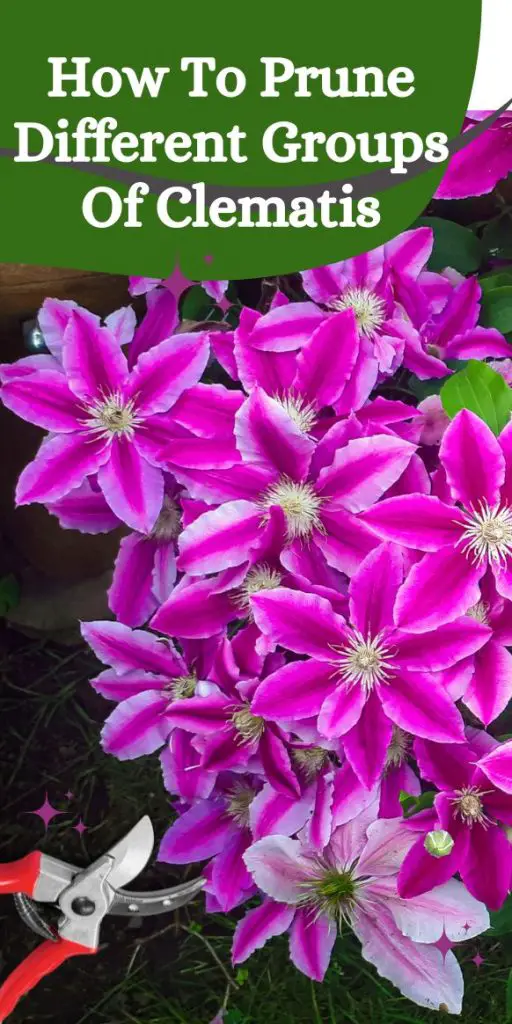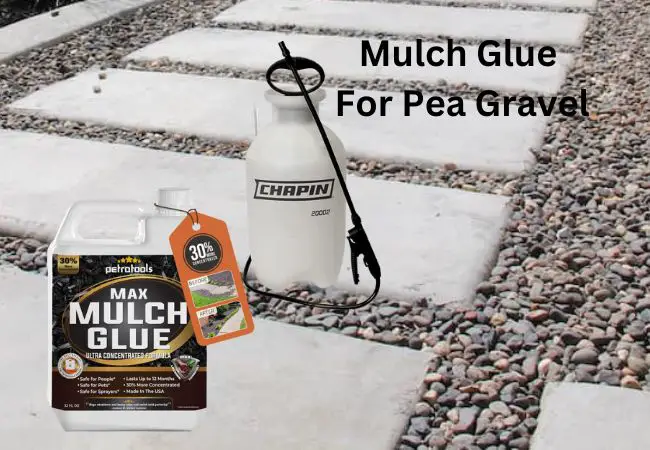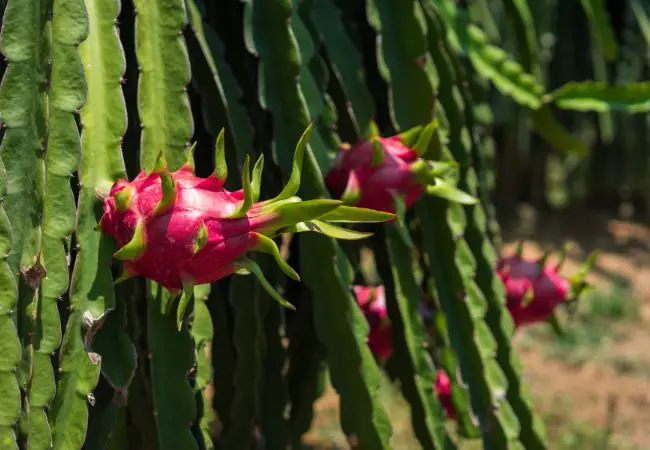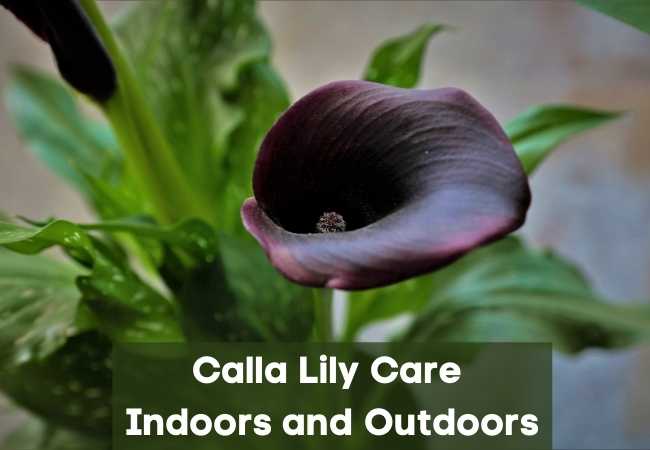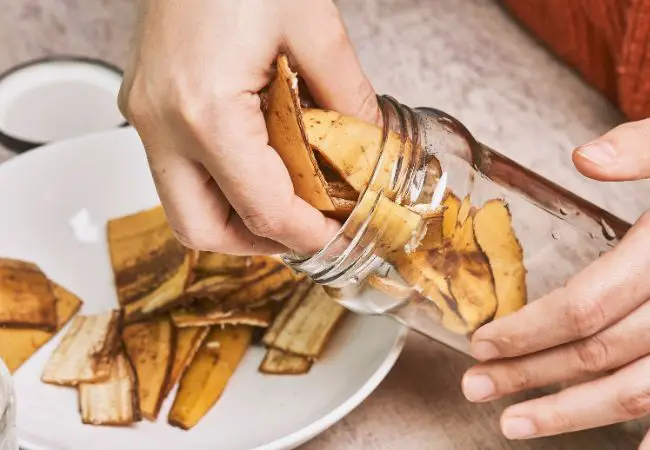Pruning Clematis According To Group
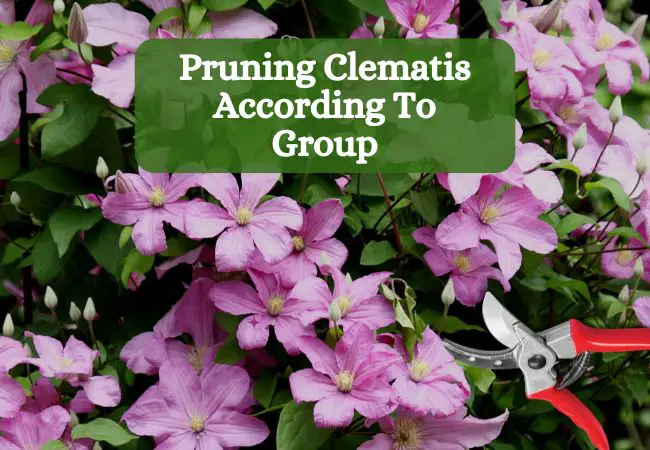
A guide to pruning clematis according to group to get healthy and flourishing vines. One of the important care routines when growing clematis is pruning.
How To Prune Clematis
Clematis, with their enchanting array of colors and captivating climbing habits, are cherished fixtures in gardens worldwide.
Yet, to ensure their vitality and prolific flowering, mastering the art of pruning is essential.
This guide aims to delve deeper into the world of clematis pruning, providing detailed insights into the different pruning groups.
You will also get techniques tailored to each group, and additional tips to nurture these plant beauties to their fullest potential.
Understanding Clematis groups
Clematis varieties are classified into three distinct pruning groups, each with its unique flowering habits and pruning requirements:
Group 1: Spring Bloomers
Notable examples include Clematis montana and Clematis alpina. These clematis bloom on last season’s growth, often referred to as “old wood.”
Pruning should be undertaken lightly, primarily focusing on removing dead or damaged stems post-flowering to maintain shape and encourage new growth.
Group 2: Repeat Bloomers
Prominent varieties include Clematis ‘Jackmanii’ and Clematis ‘Nelly Moser.’ These clematis flower on both old and new growth, ensuring blooms throughout the growing season.
Pruning entails moderate trimming in late winter or early spring to promote new growth while maintaining an attractive form.
Group 3: Late Bloomers
Noteworthy examples encompass Clematis viticella and Clematis texensis. These clematis bloom solely on new growth emerging from the current season, known as “new wood.”
Pruning requires a more drastic approach, cutting back to ground level in late winter or early spring to stimulate robust growth and abundant flowering.
Pruning Techniques for Each Clematis Group
Group 1: Spring Bloomers
Timing: Post-flowering in spring.
Method: Remove dead or weak stems, untangle growth, and shape the plant.
Tips: Gentle pruning is key; excessive cutting may diminish flowering the following season.
Group 2: Repeat Bloomers
Timing: Late winter or early spring.
Method: Trim back to healthy buds, removing dead or overcrowded growth.
Tips: Strive for balanced pruning to encourage consistent flowering throughout the season.
Group 3: Late Bloomers
Timing: Late winter to early spring.
Method: Cut back all stems near ground level.
Tips: Fear not the shears; these clematis thrive on hard pruning, resulting in vigorous regrowth and bountiful blooms.
General Clematis Pruning Tips
Utilize sharp, sanitized pruning tools to ensure clean cuts and minimize the risk of disease. If you cut an infected clematis vine and then proceed to cut a healthy vine can pass on the disease.
Wear protective gear, including gloves and long sleeves, to shield yourself from thorns and sharp stems.
Conduct thorough inspections while pruning to identify and promptly remove any diseased or pest-infested stems.
If you have severely infected plants, you can get rid of them completely. This will save your other clematis as well as other types of plants in the vicinity.
Dispose of pruned material responsibly to prevent the spread of pathogens within the garden.
You can choose to bury or burn these infested plant materials depending on what you prefer. Just note that piling them in the garden increases the risk of pests and diseases spreading to other healthy plants.
Additional Considerations
You should tailor your clematis pruning practices to your specific climate and location, adapting timing and techniques accordingly for optimal results.
If you get it wrong the first few times, don’t beat yourself up. Experience comes with practice as well as gardening in the same area for a long time.
Should your clematis become overgrown or neglected, don’t lose hope. Sometimes, some clematis can get out of control during a particular season especially if you have other things that require your attention in the garden.
You can easily get your clematis plant back into shape with diligent pruning and care.
Explore various support structures, such as trellises or arbors, to showcase your clematis’s climbing prowess and enhance its ornamental value.
I love training my clematis on trellis and archways. They look very pretty especially when they are in full bloom.
Interesting Posts:
Final Thoughts
Pruning clematis properly cannot be overstated. It is one of the important plant care routines that will help you unlock the full potential of your plants.
Begin by identifying the group of clematis you have and choosing the best pruning method to adopt.
I hope this post on pruning clematis according to group was helpful. Save the pin below and also follow me on @multigardening Pinterest for more awesome gardening posts.
